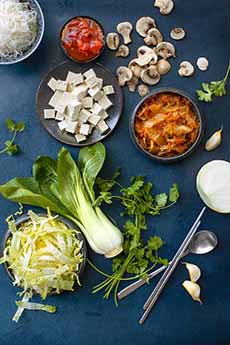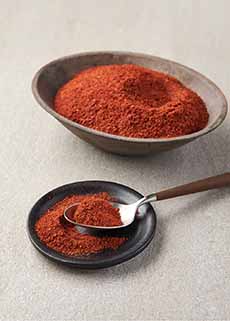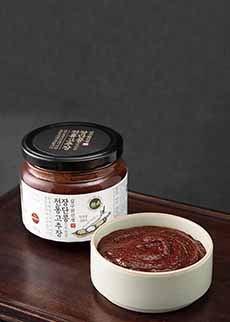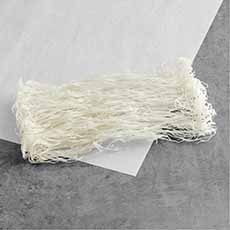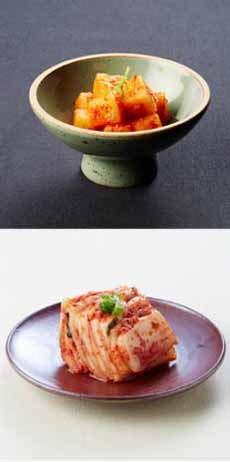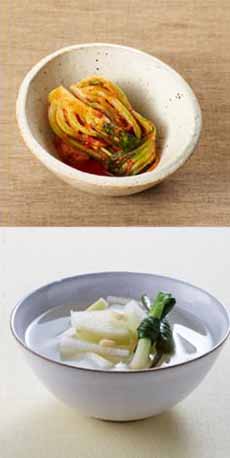A Hearty Kimchi Soup Recipe For National Kimchi Day
|
|
National Kimchi Day is November 22nd, and we’d like to share a delicious kimchi soup recipe from The Vegan Atlas. If you’re not familiar with kimchi (KIM-chee), it’s a staple Korean condiment* made from fermented vegetables (as are pickles and sauerkraut). Think of kimchi as a spicier, chunkier, and more complex form of sauerkraut. It can be vegan, or have some fish ingredients, like fermented anchovies (did you know that there are fermented anchovies in Worcestershire sauce?). “Even with all the spices and bold flavors,” says Nava Atlas, author of The Vegan Atlas, “kimchi soup somehow qualifies as comfort food! It’s a classic in Korean cuisine, and this recipe is ready to eat quickly.” Prep time is 15 minutes, and cook time is 15 minutes. As with so many recipes, no two are alike. The cook has a wide range to tailor the recipe. But the star is always kimchi, the fermented condiment based most often on cabbage (it can include other vegetables). If you’re interested in delicious vegan recipes, head to TheVeganAtlas.com and sign up! Check out the history of kimchi, below. Also below, are more kimchi recipes, from kimchi hot dogs to kimchi nachos, wings, even waffles! The ingredient list might look a bit long, but there’s surprisingly little prep. The ingredients cook up quickly. Brimming with Korean seasonings and briny kimchi, the broth becomes flavorful in no time. Optional ingredients include rice, rice noodles, or sweet potato, which all act as foils to the other vigorous and spicy flavors. While you may hesitate to buy gochugaru, you can use the rest of it as you would another red chile spice. Here’s more about it. You can substitute Aleppo pepper or Kashmiri (Indian) chile powder. It’s the same with gochujang, “the next sriracha.” Here’s more about it. 1. CUT the tofu into 6 slabs crosswise and blot well between layers of a clean tea towel or paper towel (or, if you have a tofu press, use it ahead of time). Cut the slabs into dice. 2. HEAT the oil in a soup pot. Add the onion and sauté over medium heat until translucent. Add the garlic and continue to sauté until the onion is golden. 3. ADD the cabbage, mushrooms, ginger, gochugaru, water, bouillon cubes, soy sauce, and tomatoes. Bring to a slow boil, then turn down the heat and simmer gently until the cabbage and mushrooms are wilted about 5 minutes. 4. ADD the reserved tofu, bok choy, gochujang paste, kimchi, and scallions. The broth will likely be a bit crowded, so add 1 to 2 cups of water or more as needed. Continue to cook over low heat for 5 minutes, or just until everything is piping hot. Don’t overcook! 5. REMOVE from the heat. Season with salt and stir in the cilantro. Serve at once, garnishing each serving with some extra scallion and cilantro. For the optional ingredients: Kimchi has been made for three thousand years in Korea. It was, and is, made by fermenting vegetables. It began as a way to ferment and store vegetables during the cold winter when many Koreans died of starvation. It quickly became a staple food for year-round consumption, a ubiquitous side dish on every table every day [source]. The dish is an integral part of every meal—so much so that when South Korea launched its first astronaut to space in 2008, it sent kimchi with her [source]. Today, kimchi is pungent and fiery, seasoned with red chile flakes or whole chiles. But historical versions were not spicy. Early records of kimchi do not mention garlic or chile peppers. In fact, hot chiles, now a standard ingredient in kimchi, are a New World crop. They were unknown in Korea until the early 17th century when they were introduced to East Asia by Portuguese traders. The first mention of chiles in Korea is found in an encyclopedia published in 1614 [source] and kimchi with chili peppers was described in a book on farm management. However, it was not until the 19th century that the use of chile peppers in kimchi was widespread. The recipes from the early 19th century closely resemble today’s hot and spicy kimchi [source]. A 1766 book describes kimchi varieties made with different ingredients, including chonggak-kimchi (made with chonggak radish), oi-sobagi (made with cucumber), seokbak-ji (made with jogi-jeot, salted seafood), and dongchimi (Korean radish, napa cabbage, scallions, pickled green chile, ginger, Korean pear and watery brine). Napa cabbage, the key ingredient in most popular modern kimchi, was introduced to Korea from China only at the end of the 19th century [source]. The basic modern recipe came together: a powerful punch of napa cabbage, scallion (green onion), fish sauce, red pepper flakes, rice flour, salt, ginger, radish, carrot, and garlic, fermented kimchi in onggi (a clay pot) is loved by many around the world [source]. Considered the national dish of Korea, kimchi is eaten as a side dish as well as incorporated into recipes. Given regional preferences and ingredients, there are more than 200 types of kimchi in Korea [source]. “Kimchi season” spans November and December, the time when kimjang (kimchi curing) takes place in preparation for winter. During this time, family members and neighbors gather in each other’s kitchens to cook together, trade recipes, and share stories. Kimjang is meant to create moments of joy and encourage living in harmony with nature. Kimchi is stored in large clay pots or jars. Storing them in the family refrigerator meant there was little space for anything else. Hence, many Korean households even have a separate kimchi refrigerator [source]. Beyond Korea, kimchi is a terrific fusion food, pairing well with everything from eggs to sandwiches to meat to tacos. If you like pungent, spicy foods, take a taste. Many supermarkets carry kimchi in the refrigerated foods section. Mother-In-Law’s Kimchi is a favorite of ours. |
|
|
________________ *Along with hot sauce, ketchup, mayonnaise, mustard, salsa, and other familiar condiments on the American table, pickled foods are also categorized as condiments. Common pickled foods used as condiments the world over include chutney (South Asia), cucumbers (dill, butter, and gherkin pickles, for starters in North America and cornichons in France), ginger (Japan), marmite pickled onions (UK), olives (Mediterranean), and sauerkraut (Germany). Almost all vegetables have been pickled and used as condiments in some form: whole, sliced or diced into a relish. |
||

